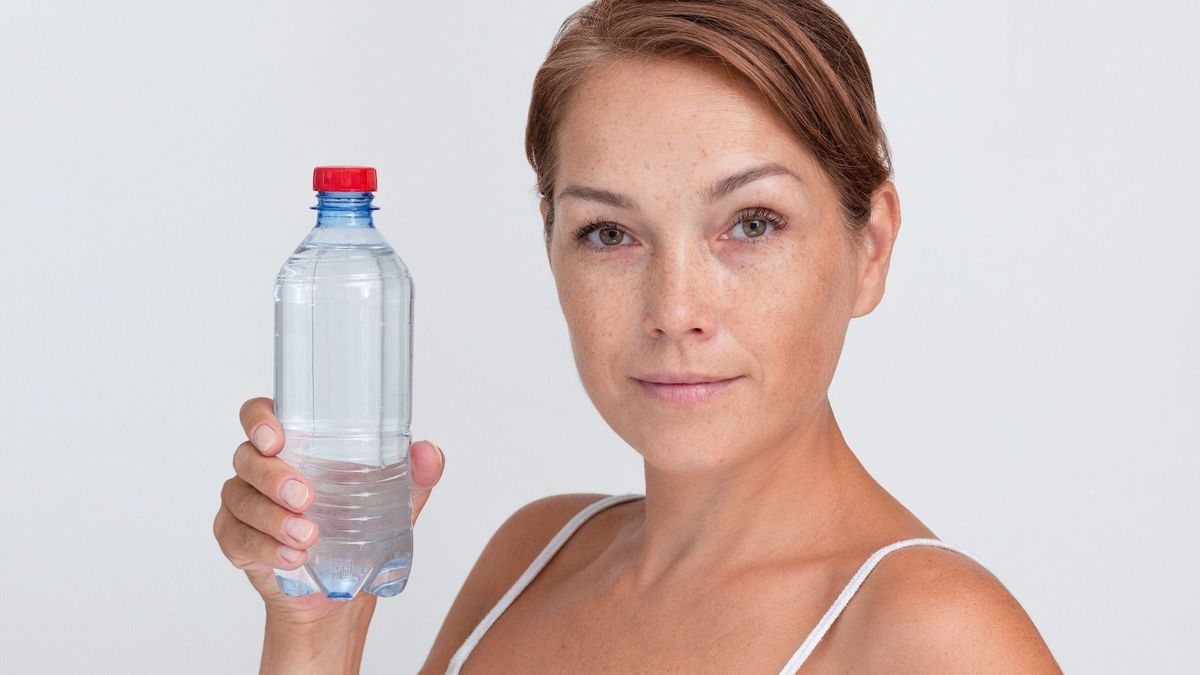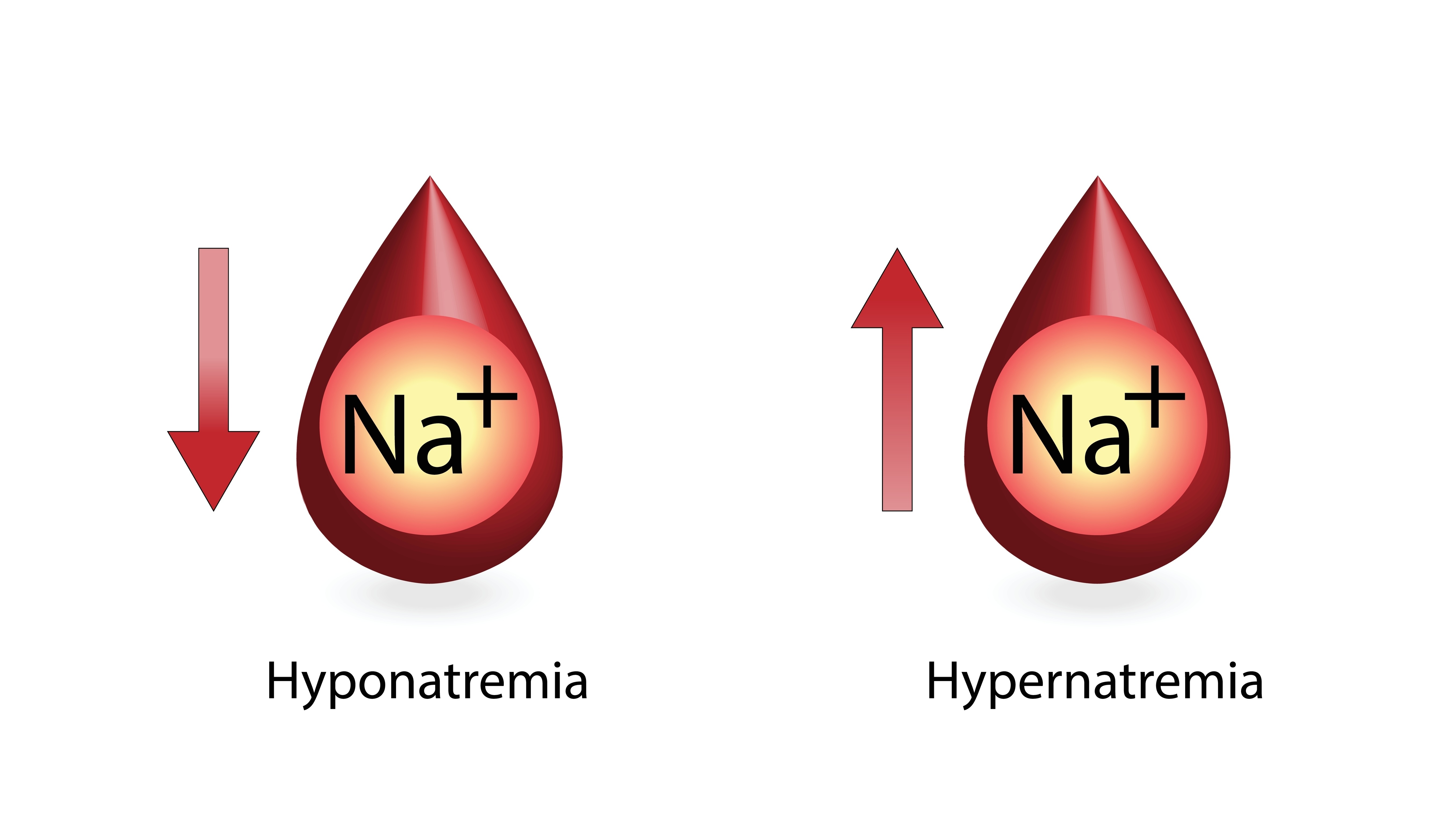
Hypernatremia is a medical condition characterized by high levels of sodium in the blood. What is its origin ? Can we avoid it and above all treat it? We take stock with nephrologist Prisca Mutinelli-Szymanski.
Osmolality, homeostasis… Intra and extracellular water
“Water represents 60% of body weight. 40% of this volume is found in the intracellular sector (SIC), it concerns the water found inside the cells, et 20% in the extracellular sector (SEC), i.e. in the fluid, the liquid plasma and interstitial fluidbegins nephrologist Prisca Mutinelli-Szymanski. “Natremic variations, hyponatremia or hypernatremia, are representative of water at the intracellular level”she continues.
Globally, there are exchanges between the extra and intracellular sector to allow us to always maintain the right dosage of water, and our body does this in principle naturally. “It compensates for the losses on one side and the other, so as to keep in the body a osmolality“, she deciphers. Osmolality is a reflection of what we call osmotic force, namely, what allows these exchanges to take place between the two sectors.
As for the quantity of water that we will have in the extra and intracellular, it will also be linked to the concentration des solutes. In short, “there is water in both sectors and exchanges are made to maintain what we call homeostasisnamely a balance between water, the osmoles of the different compartments”summarizes the nephrologist.
Hypernatraemia: definition
“Hypernatraemia refers to intracellular dehydration, it is quite rare”, specifies Dr. Prisca Mutinelli-Szymanski. Indeed, normally, the body self-regulates quite easily, even when problems appear. However, if there is a lack of water in the intracellular sector, this will increase the sodium concentration. “It is not the quantity of sodium that is increased” she nuances, but, “as there is less water in this area, the sodium level will increase“.

Note that hypernatremia should not be confused with hyponatremia (Intracellular hyperhydration), reporting a decrease in plasma sodium concentration (< 136 mmol/L). Hyponatremia is caused by an excess of water relative to sodium. So, we talk about normal serum sodium level when the sodium level in the blood is between 136 and 145 mmol/l.
Symptoms, signs of hypernatremia
The other clinical sign that can be observed in intracellular dehydration: dryness of the mucous membranes. “Sometimes patients are asked to stick out their tongue to check if it is dry”, she reports. Hypernatraemia can therefore easily be compensated by ingestion of water.
“It can nevertheless be very serious if it is not compensated, which can be the case in Babiesfor example, who cannot access water on their own, the bedridden or the patient in intensive care intubated and ventilated. Certain patients, in a psychiatric or neurological context also, if there is an attack on the thirst centers”, underlines the specialist. It is this involuntary water restriction which is then the source.
Causes of hypernatremia
In cases of intracellular dehydration giving rise to ionic disorders, there are extrarenal causes and renal causes.
Extrarenal causes
For the first, these are often people in a state of overall dehydration : serious burn victims subject to very large water losses, cases ofinsolation important or diarrhea acute. “Normally, thirst manifests itself and helps compensate, but if we are in a situation where we do not have access to water, intracellular dehydration can set in”notes the nephrologist.
Renal causes
They are often linked to classic diabetes mellitus. This diabetes can give rise to polyuria (abundant urine) normally compensated by polydipsia (excessive thirst), that is to say “the increase in blood sugar will cause osmotic diuresis and make you want to urinate more than you should“translated by Dr. Mutinelli-Szymanski. “Normally, in early diabetes, we have the syndrome polyuro-polydipsique (urinary flow greater than 3 liters per day), because to compensate for this water loss, patients will drink much more., she notes. Except that, if we urinate more without hydrating ourselves more, hypernatremia will set in. Hypernatremia can also be caused by congenital nephrogenic diabetes insipidusthat is to say linked to the kidneys (renal cause).
Furthermore, an isolated deficit of the thirst regulation center at the levelhypothalamus can lead to an alteration in the perception of thirst. Indeed, as the nephrologist explains, “l’ADH (vasopressin) is the antidiuretic hormone helping to regulate. When its secretion does not function properly, it can give rise to what is called a hypothalamic-pituitary disorder”. We also speak of inappropriate secretion syndrome.antidiuretic hormone.
In other causes, it happens that a too much salt intake during infusion (in the form of sodium chloride) for example, gives rise to hypernatremia.
Hypernatremia: how to make a diagnosis?
If hypernatremia is suspected, or if drinking water is not enough or is impossible, consult your doctor without delay. The diagnosis will then be made biologically, it is carried out through a blood test. Usually a blood ionogram. Normally, “you must have a sodium level in the blood greater than 145 Milimole per L. In case of hypernatremia, the salt level will be increased compared to normal which is between 135 and 145 MM / L.says Prisca Mutinelli-Szymanski.
Treatment of hypernatremia
Once the blood test has been carried out, in the event of hypernatremia, what will interest the doctor is the extracellular sector. “Either we have a overall dehydration and we will diagnose it by also analyzing the loss of salt in the patient’s urine“reports Dr. Mutinelli-Szymanski. “If this natriuresis (sodium level in the urine) is important, it is because the problem comes from the kidney”, she adds. Conversely, the sodium (Na) concentration in the urine is low and the kidney is doing its job correctly? It is then often severe diarrhea or profuse sweating that is the cause.
The treatment of this global dehydration is carried out simply by global rehydration: water + salt. Indeed, the extracellular sector must also be rehydrated. How ? Via oral rehydration solutions (ORS), like Adiaril, which contain water and salt. “Athletes use rehydration solutions to compensate for water loss during exercise”, she emphasizes. Or, if necessary, in salt water infusion composed of physiological serum. Indeed, “in the event of associated extracellular dehydration, an additional supply of NaCl (orally or with isotonic saline at 9 g/L, 0.5 to 1L/h) is often sufficient”explains the Nephrology Manual.
On the other hand, “faced with a context of exclusively intracellular dehydration (hypovolemia), either the patient is able to drink water, or glucose (G5) is infused to regulate water balance“specifies the nephrologist.
For more information, do not hesitate to consult the website of the University College of Nephrology Teachers (CUEN). You will also find a lot of information in the article “Hypernatrémie : a question of water”by Lorenzo Berwert, Bruno Vogt and Michel Burnier, published in the Revue Médicale Suisse.
Finally, to go further, you can browse the chapter on hypernatremia by James L. Lewis III of the Merck Manual (Merck & Co, version for healthcare professionals).
